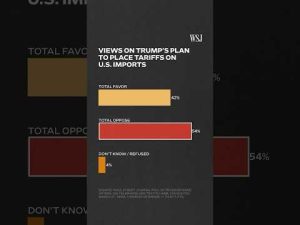In a noteworthy event that captures the spirit of exploration and ingenuity, NASA astronauts Sunnita Williams and Barry “Butch” Wilmore recently returned to Earth after an astounding 286 days aboard the International Space Station (ISS). Originally slated for an eight-day mission, these brave astronauts found themselves in a situation that could make even the most patient among us twitchy—nearly a year isolated in a metal tube orbiting the planet. Certainly, spending an extended vacation in space sounds appealing, but it’s a bit different when the view is mostly of Earth and your family is waiting on the ground, likely wondering if you’re ever coming back. It’s a scenario that could easily fuel a blockbuster rom-com: Astronauts stuck in space, longing for home and maybe even a cheeseburger.
The return was made possible by SpaceX’s Dragon capsule, a testament to the collaboration between private industry and NASA. However, the Biden administration’s apparent failure to ensure a timely return raises eyebrows. After all, what is a little engineering marvel if the astronauts can’t get back when promised? This situation has left people pondering whether government involvement is always the best route to tackle challenges. Critics can’t help but wonder if a different administration would have led to a swifter resolution.
As for the astronauts’ well-being after such a long stint in microgravity, the physical effects can be quite alarming. Studies show that astronauts can lose significant bone density and muscle mass, making them feel more like a jellyfish than an American hero upon return to Earth. The weightlessness in space can also result in other quirky side effects—like fluid shifting to the upper body, giving them puffy faces. That’s right, astronauts don’t come back looking like movie stars fresh off the red carpet. Instead, they resemble something out of a sci-fi film featuring an alien invasion.
Beyond the splashdown, there’s another headline swirling around the news: President Trump’s recent phone call with Vladimir Putin. This long-awaited conversation did not unfold without spectacle, as Putin seemingly kept Trump waiting—an action rife with the sort of cheeky disrespect one might expect from a schoolyard bully. What’s more, the two leaders’ accounts of their discussion diverged, leaving many to wonder if this was another case of the Russians playing games. Naturally, it raises the question: are they truly seeking peace, or merely looking to stall while they fortify their position?
While Trump’s account heralded talk of a ceasefire, the reality on the ground suggested otherwise. With Russian forces attacking civilian infrastructure almost immediately after the call, it appears Putin may be employing his usual maneuvering tactics of saying one thing while doing another. The madness of this negotiation battlefield doesn’t inspire confidence, as it shows the U.S. must maintain a strong stance. Europe seems reluctant to agree to Putin’s outrageous demand to halt arms supplies to Ukraine, reinforcing the idea that doing so would leave Ukraine defenseless—a situation no one wants to see.
It’s evident that while astronauts like Williams and Wilmore are making headlines for their daring feats in space, geopolitical maneuvers can often feel just as alien. The juxtaposition of the astronauts’ journey of resilience with the muddled diplomacy back here on Earth serves as a reminder of the challenges we face not just in the stars, but here at home and abroad. The tide of global politics is unpredictable, but one thing remains clear: bold leadership is needed to navigate complex negotiations and keep our allies secure. As we welcome our brave astronauts back to Earth, let’s hope for similar resolution strategies in the political arena that prioritize stability and peace over competitive posturing.







